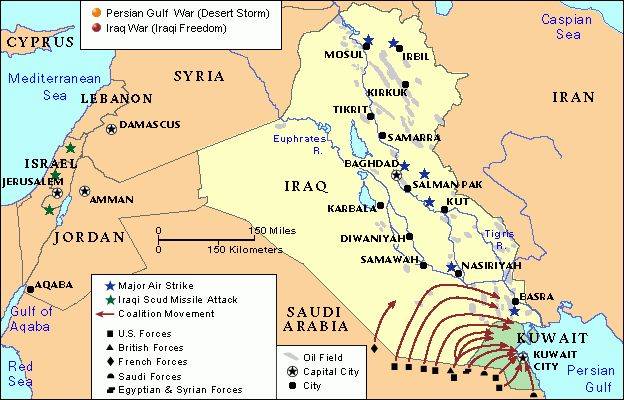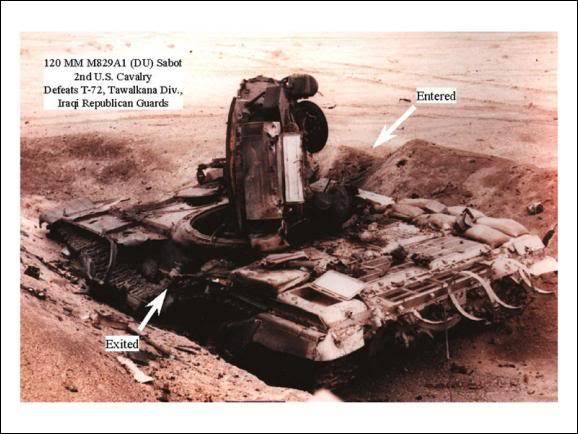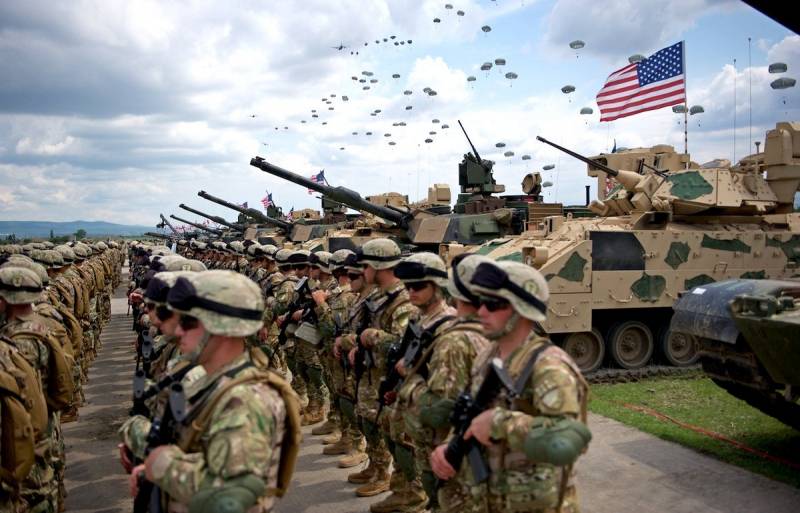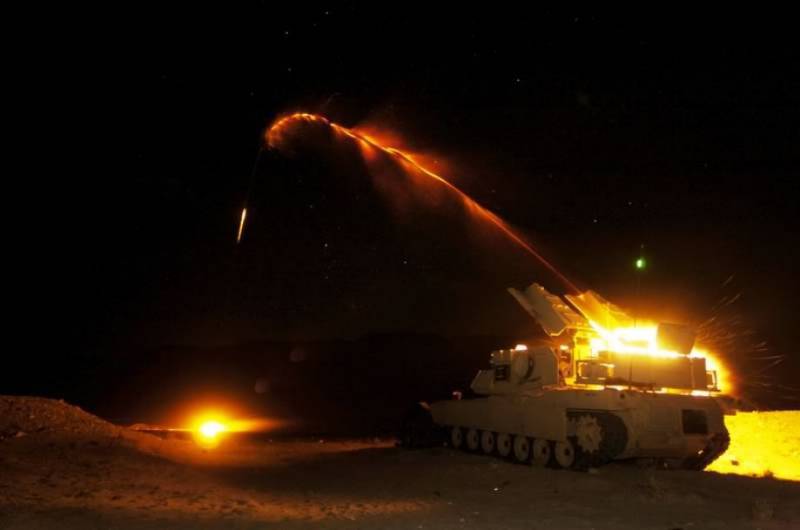The war with the superpower. Dangerous scenario
Experience - knowledge of how not to act in situations that will never happen again.
Generals are preparing for past wars. And what is the result? The combat capability of any army is determined not by the number of its past battles, but by the talent and abilities of the current commanders.
What experience did the Wehrmacht Blitzkrieg had before the successful 1939-40 Blitzkrieg? What personal combat experience did Yamamoto and his subordinates have when planning to strike at Pearl Harbor?
A properly organized and trained army does not need “combat experience”.
The army needs training that simulates a standoff with a technically developed and numerous adversary. In a thorough analysis of the threats and realities of a similar war. In the creation of new tactics and working out of their elements in the course of regular exercises.
How will the abstract "combat experience" when conditions change? History It is full of examples when armies that constantly fought against weaker opponents instantly lost their combat capability in conflicts of a different type. The tragic “summer of 41”.
Now they are talking about the combat experience gained in Syria. But what is the use of it?
The army can “acquire combat experience” as much as possible by acting against the guerrillas, the Mujahideen and the terrorists. Take part in police operations and territory patrols.
But will such “experience” be useful in a collision with modern mechanized divisions, armies and fleets USA and China? The answer is too obvious to be said out loud.
On this account there is one instructive story.
“An army that did not fight with anyone”
Ironically, the United States is the only one who has the experience of a full-scale modern war. At least, of all the conflicts of the twentieth century, the conditions of “Storm in the Desert” are considered to be the closest to modern ones. And in scale, this “storm” has become the largest since the end of World War II.
But, as mentioned above, the acquired combat experience for a quarter of a century dissolved in time. The essence of this story is in the preparation and planning of the operation itself. Moreover, the Yankees had no experience of war in the desert before.
The situation was complicated by distance. A group of half a million soldiers and thousands of vehicles (without taking into account the forces of the allies, who often needed help themselves) were transferred to the other side of the Earth.
“War with the Papuans”
For a quarter century, Saddam has accumulated so much weaponsthat the armies of most developed states could envy him. By the quantity and quality of the armed forces, Iraq in 1991 objectively ranked fifth in the world. Guards tank the divisions “Hammurappi” and “Tavalkan” are not barmalei in the vicinity of Palmyra.
Saddam’s army was a proven military tool sharpened during the eight-year Iran-Iraq war (1980-88)
In 1990, she had one day to capture and occupy Kuwait.
Invaluable combat experience. Motivation. Modern samples of Soviet and Western weapons, exacerbated by their number. One of the most advanced air defense systems in the world.
“2.0 Citadel”
While the Yankees were carrying diapers and a Coke across the ocean, the Iraqis erected three defensive lines on the southern border of Kuwait and laid 500 thousand min. To maneuver fire weapons in the directions of a possible breakthrough in the desert, more than 1000 kilometers of new ways were laid, bringing flank attacking units of the Multinational Force. With disguised shelters and prepared positions for Iraqi military equipment.
Southern Kuwait was turned into an impregnable frontier able to withstand the massive strikes of enemy tank and motorized columns. “Kursk arc” in the sands.
Wear out in defensive battles. Discard. To cause unacceptable losses.
Unfortunately for Iraqis, the Pentagon also had the opportunity to study the results of Operation Citadel. To study well enough not to repeat the mistakes of the Hitler generals.
Such a serious milestone can not be crushed by air strikes or heavy artillery fire. Any land army, stepping on such a “rake”, would have suffered terrible losses. The example of the “Citadel” left no doubt - thousands of tanks that had been burned down, 83 thousand dead fascists.
“Six weeks of supersonic warfare”
The first phase, expectedly, was offensive air “preparation”.
Due to better coordination and numerical superiority, aviation The MNF (80% of the US Air Force) immediately seized the initiative in the air. Iraqi pilots, the heroes of the air battles of the Iran-Iraq war, could not provide any distinct resistance. The surviving "MiGs" and "Mirages" in a hurry flew to Iran. From the powerful and layered air defense there is no trace left.
The deafening blow of 88 500 tons of bombs undoubtedly weakened Iraq.
But how did this affect the half-million grouping in Kuwait?
“Bomb every dune”
In recognition of the Coalition's command, erected on the “Hussein Line” shelter, engineering structures and road embankment reduced exploration capabilities by 90%. After six weeks of intense bombardment, the 2 / 3 of Iraqi armored vehicles and fortifications remained in the ranks. Then it turns out that the Americans overestimated the accuracy of their strikes - the real losses of Iraqis turned out to be even lower.
The weakened but undefeated group continued to occupy the frontiers, having everything necessary for the continuation of hostilities. No air strikes could force Saddam to withdraw an army from Kuwait.
This is well understood and the command MNF. There was no “electronic miracle” capable of winning the war. This task could be solved only by a soldier, “putting his boots on the border of Kuwait and Iraq”.
“Contactless” war of a new type they talked about in the following years - no more than a propaganda “duck”, created with the aim of hiding from the public the true extent and risks of the “Storm in the Desert”.
We will not talk about future wars, but as of 1991, neither the US Armed Forces nor any other country could break through the “Hussein Line” without the risk of return fire and counterstrikes by the Iraqi Guard.
Therefore, the main intrigue, the event and the lesson of “The Storm” were not the bombing and the tomahawk launches, but the last three days of the war. Ground phase.
270 kilometers per 12 hours
The Americans planned a forced march along a large “arc” passing through the territory occupied by the enemy. Through the Iraqi desert. With the subsequent breakthrough into Kuwait from the northern, weakly protected direction, to the rear of the group, entrenched in the "Hussein line".

Smoothly only on paper. In reality, the plan raised concerns. The “Hussein Line” is not a static Maginot Line. It was based on the “steel fists” of armored units, able to turn around and take the fight from any direction.
It all depended on the pace of the attack. Will the American tanks and motorized infantry have time to break into Kuwait before the enemy regroups forces and launches a counterstrike? Will the technique withstand the test of fire and sand?
By the evening of the first day of the offensive, the MNF units, moving through Iraq, dived 270 km. Then the pace slowed down, the resistance grew. On the fourth day, the advance units wrapped the 430 tracks of desert kilometers.
First of all, the Iraqi generals were shocked. Nobody imagined that modern tank armada will be able to move with such speed. In the sand. Day and night. Instantly suppressing any resistance.
A considerable “positive” role was played by the experience of the Iran-Iraq war, where opponents are accustomed to trample on the ground, leading fierce battles for every ruin in human settlements.
Attempts to detain "Abrams" by forces of separate units, who managed to stand in the way of the enemy, were not crowned with success. The most significant battle on Esting-73, where parts of the Tavalkan division managed to dig in (one of the best Iraqi units that had new types of tanks in service, including T-72 and T-72М). There is no reliable loss data in that battle. But, the overall result indicates that the resistance was broken. A few hours later both brigades "Tavalkan" ceased to exist.

Helicopter landings were used to capture the control points along the route of the tanks. Then began the transfer of air fuel and ammunition. By the time of approach of technology in these areas, refueling points were already ready. After tanks, 700 trucks with fuel rushed from the border.
All artillery was divided into two groups. While one provided fire support, the other moved forward at maximum speed, barely keeping up with the tanks.
Like a giant skating rink, heavy divisions of the United States crushed everything that got in their way.
“Blitzkrieg on new physical principles”
The main components of the success of the ground phase, which passed surprisingly quickly and without noticeable losses for the Coalition, are:
A) The use of the latest means of observation, control and communication. Compact navigation devices “Trimpak” and “Magellan” were much more important for the soldiers than the odious CD “tomahawk”. Analogues of GPS-navigators, which became popular in the civilian market a decade later. Unlike civilian devices, they allowed to calculate the angles of the art. fire and warn about the danger of being in areas of air strikes.
The next important novelty was night vision devices, massively implemented in all units of the US Army. AN / PVS-7 monocular glasses for crews of combat vehicles, AN / AVS-6 glasses for helicopter pilots, AN / PVS-4 thermal sights for rifles and machine guns.
All this made it possible not to reduce the rate of occurrence in the dark. On the contrary, at night the Americans gained absolute superiority, opening fire even before the Iraqis learned of their presence.
Everything is clear here. For eight years, the Iraqis fought on equal terms with Iran. But during the "Storm" they felt all the delights of war with a technologically advanced adversary.
But that was not all.
B) The second reason for success was, without exaggeration, an outstanding organization. The Americans could coordinate the actions of their units, stretching hundreds of kilometers across the dangerous desert. And to establish a supply system, which leveled the traditionally lack of reliability of Western technology in difficult conditions and allowed to maintain an unprecedented pace of occurrence.
In addition, the ability to conduct large-scale offensive operations around the globe was demonstrated. In the shortest possible time, having transferred half a million land grouping across the ocean and adjusting its supply.
Finale
The speed with which “blew out” Iraq shows that it was preparing for another war. Despite careful study of old methods? It turned out that the Iraqi military had no idea what they would have to face in the hot winter of 1991, in the Arab-Israeli conflicts and in the long, bloody confrontation with Iran.
Last time, the Americans surprised the world with a system of organization and technical innovations that changed the situation on the battlefield. Navigators, thermal imagers, attack helicopters with automatic detection of enemy positions (Firefinder). What variations are possible in our time?
According to the author, one of the most significant aspects is the massive introduction of guided weapons. Up to guided artillery shells and guidance systems for unguided aircraft missiles (NURS). Practice confirms the theory. If at the time of the “Storm”, only 30% of ammunition were classified as guided weapons, by the time of the invasion of Iraq (2003), the share of such ammunition had increased to 80%. Currently, almost every bomb has its own guidance system.
All this will make even a “limited military conflict” with the participation of technically developed countries completely different from what we used to see in the reports about the defeat of ISIS.
You can recall the more dense aviation support. When each combat aircraft is able to use high-precision weapons and find targets at any time of the day. For comparison: during the war with Iraq, only 1 / 7 of American aircraft had such capabilities.
Robotics, Dronesplanning a hundred kilometers of bombs. New classes of combat vehicles. Even more long-range artillery.
However, quite predictions.
Even with the example of “The Storm in the Desert” one can see how serious, in a military relationship, is a country with superpower status. And how does a conflict of this level differ from the usual “anti-terrorist operations” and clashes between the countries of the “third world”.
Based on materials modernarmy.ru


Information